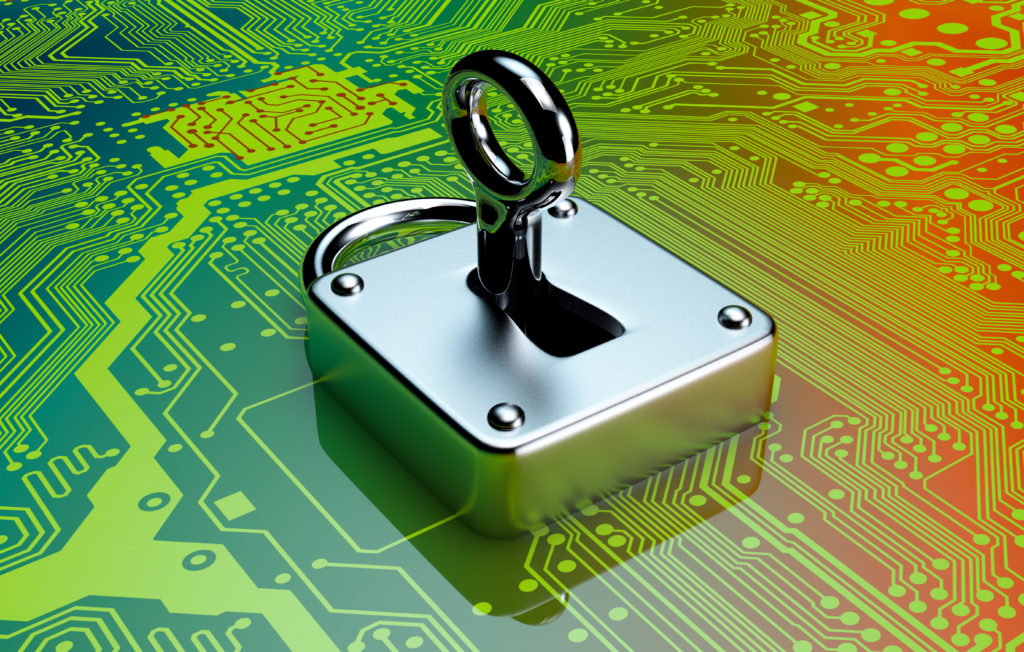Cybersecurity Vs. Information Security: Is There a Difference?
By:Â Melissa Stevens, Senior Digital Marketing Manager, BitSight
Is there a difference between cybersecurity and information security?
Not only is this a great question, but itâs something weâve heard many times before. Cybersecurity and information security are so closely linked that theyâre often thought of as synonymous. But, there are some important distinctions between the two. Below, weâll explain those distinctions, review a couple important areas of overlap, and discuss why this differentiationâand the evolution of these definitionsâmatters in the security sector.
Information Security
 Information security (or âInfoSecâ) is another way of saying âdata security.â So if you are an information security specialist, your concern is for the confidentiality, integrity, and availability of your data. (This is often referred to as the âCIA.â) Most modern business data resides electronically on servers, desktops, laptops, or somewhere on the internetâbut a decade ago, before all confidential information migrated online, it was sitting in a filing cabinet. And some confidential information still is! InfoSec is concerned with making sure data in any form is kept secure and is a bit broader than cybersecurity. So, someone could likely be an information security expert without being a cybersecurity expert.
Information security (or âInfoSecâ) is another way of saying âdata security.â So if you are an information security specialist, your concern is for the confidentiality, integrity, and availability of your data. (This is often referred to as the âCIA.â) Most modern business data resides electronically on servers, desktops, laptops, or somewhere on the internetâbut a decade ago, before all confidential information migrated online, it was sitting in a filing cabinet. And some confidential information still is! InfoSec is concerned with making sure data in any form is kept secure and is a bit broader than cybersecurity. So, someone could likely be an information security expert without being a cybersecurity expert.
Cybersecurity
Cybersecurity is all about protecting data that is found in electronic form. Part of that is identifying what the critical data is, where it resides, and the technology you have to implement in order to protect it.
Overlap Between Information Security & Cybersecurity
There is a physical security component to both cybersecurity and information security.
If you have a warehouse full of confidential paper documents, you clearly need some physical security in place to prevent anyone from rummaging through the information. And as more data becomes digital, the process to protect that data requires more advanced IT security tools. So, while you canât put a physical padlock on a desktop computer, you can put a padlock on your server room door. In other words, if your data is stored physically or digitally, you need to be sure you have all the right physical access controls in place to prevent unauthorized individuals from gaining access.
They both take the value of the data into consideration.
 If youâre in information security, your main concern is protecting your company's data from unauthorized access of any sortâand if youâre in cybersecurity, your main concern is protecting your companyâs data from unauthorized electronic access. But in both scenarios, the value of the data is of utmost importance. Both individuals need to know what data is most critical to the organization so they can focus on placing the right controls on that data. In some scenarios, an information security professional would help a cybersecurity professional prioritize data protectionâand then the cybersecurity professional would determine the best course of action for the data protection. But with the changing security landscape over the past decade, things arenât always this black and white.
If youâre in information security, your main concern is protecting your company's data from unauthorized access of any sortâand if youâre in cybersecurity, your main concern is protecting your companyâs data from unauthorized electronic access. But in both scenarios, the value of the data is of utmost importance. Both individuals need to know what data is most critical to the organization so they can focus on placing the right controls on that data. In some scenarios, an information security professional would help a cybersecurity professional prioritize data protectionâand then the cybersecurity professional would determine the best course of action for the data protection. But with the changing security landscape over the past decade, things arenât always this black and white.
The Evolution Of Information Security & Cybersecurity
Over the last decade, weâve seen a fusion between cybersecurity and information security, as these previously siloed positions have come together. The challenge is, most teams donât have an information security professional on staffâso the responsibilities of a cybersecurity professional have expanded dramatically. Cybersecurity professionals traditionally understand the technology, firewalls, and intrusion protection systems needed, but werenât necessarily brought up in the data evaluation business.
But today, that is changing. As this subject becomes increasingly important for businesses, the role of cybersecurity experts is evolving so they can properly protect data. Business partners and investors are increasingly aware of the importance of this topic, and companies are asked regularly about their effectiveness in securing data and managing risk in both cyber and physical forms.
In Summary
Because of the evolution of this position, itâs easy to understand why many people discuss cybersecurity and information security in the same breath. And, you can see how the questions that information security and cybersecurity try to answer are, in essence, the same:
- How do we define what data is critical to us?
- How do we protect that data?
Where do you see the industry moving in the next 10 years? Tweet @BitSight with your thoughts.
 BitSight is the NAFCU Services Preferred Partner for Cybersecurity Rating. Learn more at www.nafcu.org/bitsight.
BitSight is the NAFCU Services Preferred Partner for Cybersecurity Rating. Learn more at www.nafcu.org/bitsight.
